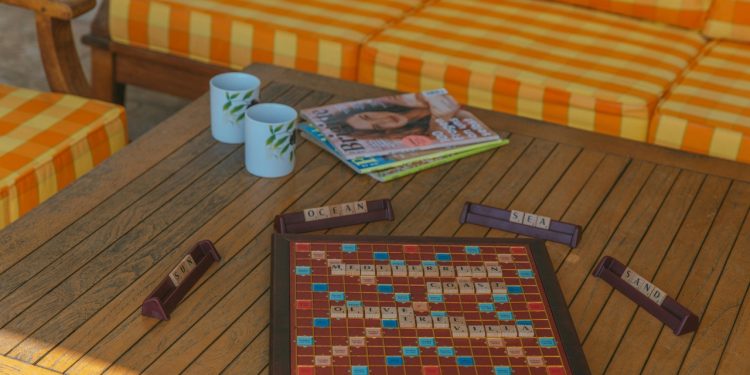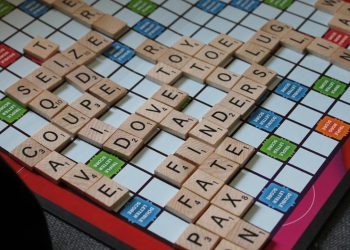The thrill of conquering a word puzzle is unmatched in gaming. Be it a short activity in between meals or a lengthy session of several hours, the thrill of combining letters into words can be satisfying. Having spent years designing games that keep players glued to their consoles, let me assure you: Creating a viral puzzle word game is not as straightforward as it may appear. A good blend of psychology, design, and good fortune makes the secret sauce. Fortunately, the right strategy can make your word puzzle game enticing to millions.
Now let’s put on the thinking caps and start brainstorming on how we create a game that is entertaining and possess the ingredients to become popular.
1. Understand Your Audience: Who Are You Creating For?
Figuring out the specific audience that the word puzzle game is targeted at is a prerequisite to building it. From my experience, this is the single most important step some developers forget to focus on. The audience is not some vague combination of individuals; they are tangible customers with specific tastes and preferences.
Consider the following.
Who is my audience, and what are their ages? Every age group enjoys puzzle games in different ways. For instance, younger adults might welcome sleek designs and fast-paced challenges, while older audiences may prefer slower games that let them unwind and relax.
What keeps them motivated? Is your audience motivated by intellectual stimulation, or do they prefer something more light-hearted and casual? Knowing their underlying reason makes it easier for you to adjust the design, difficulty, and mechanics of the game.
What strategies can I incorporate to make them come back? Think about games like Wordscapes and Wordle. What do they have in common? They incorporate addictive mechanics that compel players to come back for new levels, challenges, or simply to maintain their streaks.
Understanding these motivators is essential for her success with the puzzle game. For instance, if your player base consists of puzzle enthusiasts, you can provide them with mind-boggling challenges that require advanced vocabulary skills. However, if your audience is casual players who want to kill time, then offering light challenges that come with frequent rewards would work well.
2. Design an Engaging Core Loop That Is Easy To Understand
The mechanics of a game is what keeps the players interested in it, which is referred to as ‘core loop’ or ‘circle’. It is the process done multiple times over and over again. In puzzle games usually include:
- Looking at the next challenge (a grid full of letters, a set of clues, or jumbled letters).
- Completing the puzzle (retrieving words or blank filling).
- Obtaining rewards (coins, points, new level, etc. rewards)
- A hint of progress (unlocking new levels, gaining milestones, or ascending the leaderboard).
As a developer, you have to make the core loop as smooth as possible. Gamers should not face hurdles, and should instead have the option to keep developing, such as having in-game currency for hints or struggling milestones that require daily engagement to complete.
‘Wordfeud’ and ‘Words with Friends’ are a perfect example of simple yet engaging loops. Multiplayer contests are doled out with intentions to aid the players in overcoming a feeling of achievement after each victory. Always keep balancing the ease of the levels — it should neither be too hard or easy. Difficulty that brings frustration will annoy the gamers, and ease will bore them.
The Effectiveness of “Just One More”
If you are an avid gamer, the phrase “just one more level” should sound familiar. It is the feeling which you want to inculcate in your puzzle game. The idea is that players feel like they can’t stop after completing one puzzle; they NEED to finish just one more puzzle. This concept—taking them to the next level—is important in developing a game that is likely to become mass popular.
As in any game, here the puzzles have to be segmented into smaller, manageable parts. This way players will have the feeling that they are moving forward with progress, even if they only have five minutes to play.
3. Get the Game’s Look and Feel and UX Design Right
A sleek and striking visual design is fundamental to enhance the appeal of a word puzzle game. You certainly do not need to create a complicated, expensive 3D world, but your user interface (UI), as well as user experience (UX) must be user-friendly. A lot of word puzzle games fail at this diabolic attempt and players are left fuming with bloated interfaces and ineffective controls.
Here is the most crucial tip:
- Provide step-by-step guides: Do not assume at any point that players have the contextual knowledge to play the game. Especially for puzzle games where the rules could differ, provide an in-game tutorial that is uncomplicated, logical, and straightforward for users to follow to navigate the game.
- Visual Signals: If your game enables users to pick letters or create words, ensure that the controls are straightforward. The buttons should be labeled, and the actions should be intuitively possible with basic understanding.
- Appealing Art Style: The art style must also match the theme of the game. A bright and fun word game could benefit from a colorful and minimalist design. The more challenging game may have a sleek, polished design. Keep the aesthetics simple and have a pleasant flow to avoid straining the player’s eyes with numerous distracting details.
- Responsive Feedback: Ease of use should allow players to get instant gratification for achieving something, e.g., solving a puzzle rewards him with appealing sound effects, animations, or some stat visuals.
Games like Word Connect and 4 Pics 1 Word exemplify this wonderfully; user-friendly layouts and engaging, effortless-to-solve puzzles allow players to seamlessly engage with the game, no matter their skill level.
4. Embed Social Sharing Features
In the case that your word puzzle game lacks social, this can be a great disadvantage in this interconnected world. Incorporating social sharing into your word puzzle game can significantly increase virality. Word games are competitive by nature, and players love competing with each other. Here’s a few tips on how to integrate social features
- Leaderboards: Players most certainly do like to see how they rank among others. Having leaderboards integrated into your game can provide players with a feeling of healthy competition.
- Sharing Achievements: It would also be a great idea to enable social media accounts to share their achievement in solving puzzles. Everyone loves showing off their feats and this can literally market your game at no extra cost.
- Tackling Challenges: People love sharing their scores on social media Wordle and the likes of these games. Incorporate challenges that reset at the end of the day so that players come back to the game and play more.
5. Daily and weekly events
Engagement Events, Challenges and new content is crucial if you intend for your game to stay relevant long after it is launched. People enjoy new content, and if your game feels repetitive after a few weeks, they are bound to lose interest.
- Daily Challenges: They can be simple, daily refreshing activities that come with bonus points, currency, or other exclusive rewards. Even if players are short on time, they will still have something to look forward to.
- Weekly Competitions: Design competitions where users have a chance to fight for premium rewards, such as certain items or a place on the leaderboard. These events need to maintain their competition, yet be fair.
- Seasonal Content: Introduce holiday-related updates like special puzzles for the season, or time-sensitive challenges. These updates will make the game feel exciting and new.
Word Search by Pinkfong is an excellent example. It’s packed with challenges and celebratory themes that motivate users to keep coming back.
6. Mobile Use and Accessibility should be Prioritized
Most people will interact with your game on a mobile device, so it’s essential that the design caters to phones. Your game should be mobile optimized, which means it must be responsive and utilize phone-specific features such as notifications.
Also think about the accessibility options. Do players have the option of changing the size of the text or the colors used in the game for better visibility? To widen your reach, it’s important to ensure your game can be accessed by as many players as possible.
Mobile-First Design
You must ensure that all aspects of your game, particularly controls and layout, are tailored to fit and be seamlessly used on smaller screens. Players should not experience the feeling of the game being created for a larger screen and later scaled down.
7. Incorporate Fun and Engaging Rewards
Rewards are arguably the single biggest driving force for continuous play in puzzle games. Puzzle games alone are sufficient to activate the problem-solving and achievement centers of our brains. Incredibly satisfying experience, however, can be achieved by adding rewards, whether in the form of coins, power-ups, new puzzles to solve, or cosmetic upgrades.
Also, these purchases can be part of the strategy with microtransactions. This is particularly effective if you are able to provide purchases such as hints, extra levels, or even skins for the game’s interface. Just be sure not to cross the threshold of becoming highly annoying.
Take Scrabble GO as a prime example; there is a mechanic that allows players to earn or purchase new tiles which is one way to spice up gameplay. These rewards are incredibly satisfying, and are helpful in motivating players to lean in more.
8. Test, Iterate, and Gather Comments
As expected, on the first try, you will not score a perfect score. After launching a game, track the interaction of the players with the game. Is there a point where everyone seems to get stuck? Do they consistently have complaints regarding how challenging and fast the game is? Did they have fun with the rewards system?
Iteration is key, so be sure to utilize that feedback. In the evolving world of puzzle games, improve your game based on user experience. The A/B testing of various attributes, changing the level of skill required for different aspects of the game, and refinement of social features can be crucial.
We’ll Try Everything Words in a Puzzle
After learning how to build a word puzzle game that has the potential of going viral, put your skills to the test with the engaging and unforgettable word puzzle game Puzzle Jam Every word counts. Whether it is solving quick challenges or brain-wracking puzzles, Puzzle Jam has you covered and coming back for more. Ready to make a journey revolving around puzzles? Start playing Puzzle Jam today














